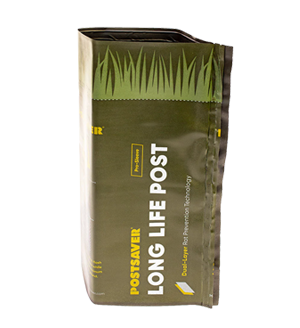Caring for Your Lawn in Winter
A Comprehensive Guide
As winter approaches, maintaining a healthy lawn becomes crucial to ensuring its resilience through the harsh cold conditions. While grass growth slows down or goes dormant during the colder months, the threats of pests, diseases, and winter weather stress persist. To safeguard your lawn during winter, follow these comprehensive tips for effective winter lawn care.
Mowing Matters
In winter, grass growth is considerably slower, requiring a shift in mowing practices. Conduct the last mow of fall at a lower height than usual, aiming for around 2 inches. Throughout winter, continue mowing as needed, keeping the lawn at a height between 2 to 2.5 inches. Ensure your mower blades are sharp to avoid shredding dormant grass, promoting a healthier lawn.
Protect your fence from damage with Fence Armor Post Guards
Snow Removal Strategies
Prompt snow removal is essential to prevent damage to your lawn. Utilize a plastic shovel to clear snow, avoiding the scraping and compacting of grass. Exercise caution with salt application, as excessive salting can harm the grass. Redirect downspouts to prevent the formation of ice sheets. Additionally, fall fertilization can stimulate root growth, minimizing the risk of winter kill spots.
Aeration for Healthy Soil

Consider core aerating your lawn early in spring as soon as the ground thaws. This process alleviates soil compaction, facilitating better air, water, and nutrient flow. Dethatch if necessary to eliminate dead grass and thatch buildup throughout the winter, promoting a healthier and more robust lawn.
Pest and Disease Control
Vigilance against common winter lawn issues is crucial. Monitor for problems like snow mold and apply fungicides if necessary. Use dormant winter oil on deciduous trees to control overwintering insects. Keep an eye out for signs of vole or grub damage, addressing them promptly. Apply pre-emergent herbicide in early spring to prevent weed germination.
Fertilization and pH Balance
Implement a fall fertilizer application to nourish grass roots as they enter dormancy. Test the pH of your soil during winter and make adjustments in spring; acidic soil can lead to issues like snow mold. Apply a spring pre-emergent herbicide along with a balanced fertilizer to rejuvenate dormant lawns. Be cautious with nitrogen levels in winter and spring fertilizers to avoid encouraging excessive foliar growth over root development.
Overseeding for Winter Color
Transition your warm-season lawn to cool-season grass for winter through overseeding. This not only provides vibrant color but also prevents complete dormancy of warm-season turf. Opt for fescue and ryegrass blends and overseed 4-6 weeks before the expected frost for optimal results.
Caring for your lawn in winter requires a proactive approach centered around prevention, monitoring, and adaptation. Adjust your maintenance practices, control pests, and address issues promptly. With diligent care, your lawn will not only survive but thrive from fall through spring, ensuring a vibrant and healthy outdoor space.














